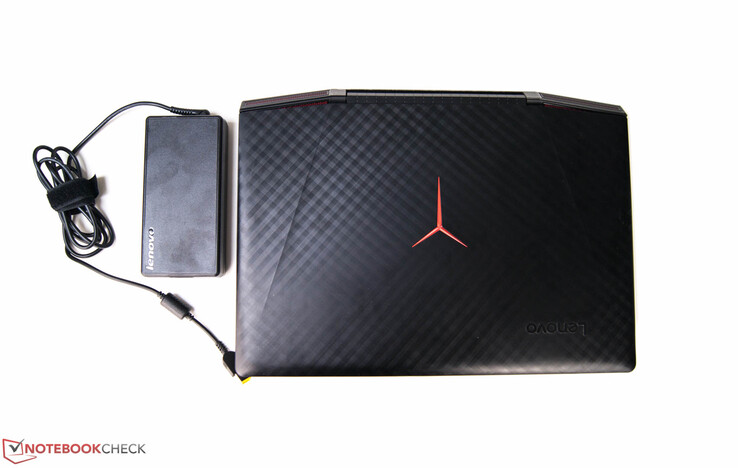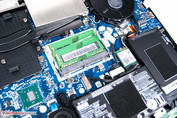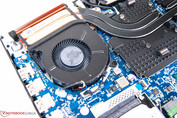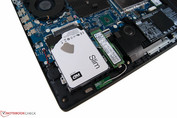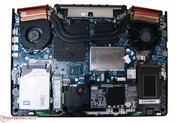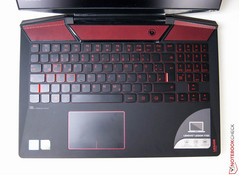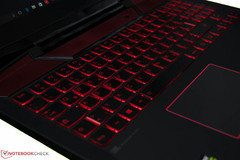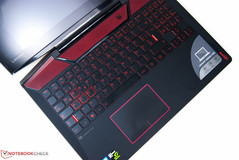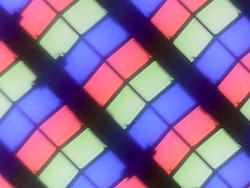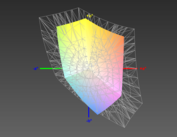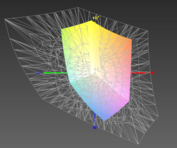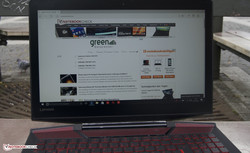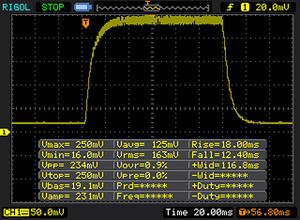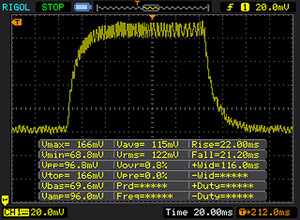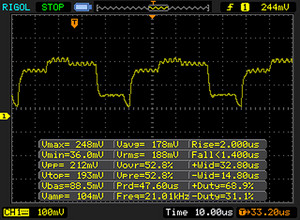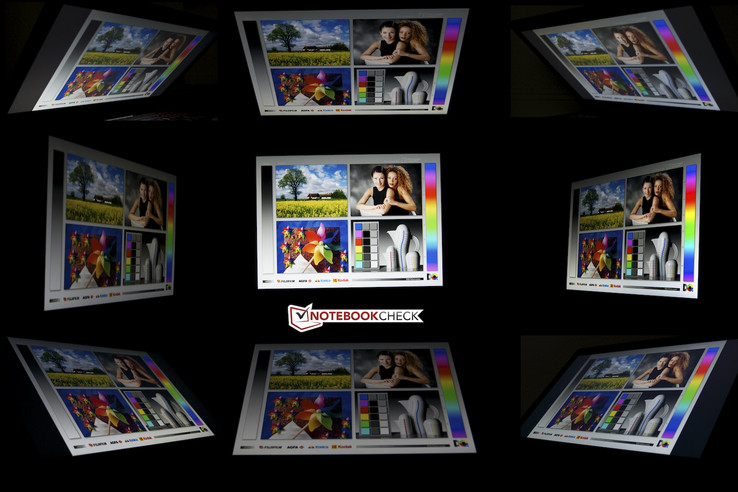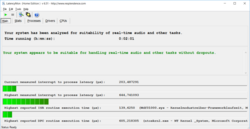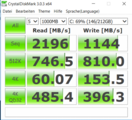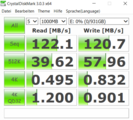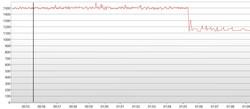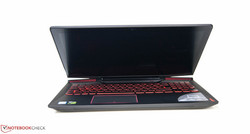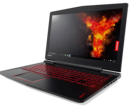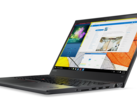Lenovo Legion Y720 (7700HQ, Full-HD, GTX 1060) Laptop Review

For the original German review, see here.
The new Lenovo Legion laptops look a lot like the models of the IdealPad gaming-series of old. The Legion Y720 is designed to fulfill all the requirements a potential buyer might have when it comes to choosing a new gaming notebook. In addition to a high-end processor from Intel's Core i7 series , 16 GB of DDR4 RAM and an Nvidia GeForce GTX 1060, Lenovo not only integrates a PCIe SSD, but also a high-capacity HDD. The price for the complete package is about 1700 Euro (~$1865). Users who are satisfied with an Intel Core i5-7300HQ can save 100 Euro (~$110) and spend that money on gaming accessories instead.
Compared to similarly-equipped competitors, the price point of the new laptop falls right in the middle of the range. The Acer Aspire V15 Nitro costs 1350 Euro (~$1480) and is thus much more affordable - but it comes with less RAM (8 GB) and less storage (1 TB). Also a contender is the Gigabyte P55W V7, which sells for 1600 Euro (~$1750). Another less expensive choice is the Asus FX502VM, which starts at 1300 Euro (~$1420) for a version of the notebook with less graphics memory and a TN display. With the GS63VR, MSI offers a better-equipped alternative with UHD display and 32 GB of RAM.
The original review was conducted by our German colleagues. While the exact version of review notebook isn't (yet) available from retailers in the US, it can be configured online on Lenovo's site for about $1460. We also found the Y720 with 4K display available for preorder (release date 06/13/2017) from one retailer for $1550.
Case
The looks of the Lenovo Legion Y720 already hint at its performance potential. Visually, the Y720 seems closely related to the notebooks from Lenovo's former Ideapad Y-series (Ideapad Y700, Ideapad Y900). The back of the display lid and the bottom consist of textured aluminum. Although these elements look stunning, they are unfortunately a magnet for fingerprints. The matte keyboard assembly and the touchpad are affected in the same manner, however. It's quite aggravating when a notebook starts looking dirty even though it has barely seen any use.
We like the uniform look of the display itself, although the bezels are a little too wide for our taste. Users who'd like to upgrade their gaming notebook or perform maintenance unfortunately are forced to remove the entire bottom unit, as the Y720 doesn't have any hatches or panels to swap out memory modules or perform similar tasks. Our scale recorded 3100 g for the notebook alone; with the power adapter included, the weight increases to 3.7 kg. In other words: the Legion isn't particularly well-suited as a daily companion for school and work. All competitors weigh less, while the MSI GS63VR in particular manages to stay under 2 kg.
Except for the Gigabyte P55W, the competitors we've mentioned are almost 1 cm (~ 0.39 in) less wide. According to our measurements, the Y720 is 3 cm (~1.18 in) high.
Connectivity
In addition to a decent complement of standard ports, the Legion Y720 also features a Thunderbolt 3 port as well as a DisplayPort. The location of the ports seems well thought out, with "permanent" connections positioned either on the left (Ethernet) or far back (HDMI). Disappointing is the fact that Lenovo decided to forgo an SD card slot.
Communication
An Intel Dual-Band AC 8265 module takes care of wireless communication. Although the transfer rates theoretically max out at 867 MBit/s, we recorded an average client transfer rate of only 511 MBit/s one meter from the router. The average server transfer speed is a bit higher at 661 MBit/s. The competitors aren't really any speedier, with only the MS GS63VR and the Gigabyte P55W posting faster speeds (+100 MBit/s) during the client test.
According to the hardware spec sheet and the LMP version number in the device manager, the WLAN module supports Bluetooth 4.2. Leonvo's specifications for the Legion only mention Bluetooth 4.1.
Accessories
The accessories on Lenovo's homepage and the ones suggested by the pre-installed software are simply products which match the Y720 from an aesthetic viewpoint. Offered are a mechanical keyboard ($140), a Lenovo Y Gaming Surround Sound Headset ($50), a Lenovo Y Gaming Precision Mouse ($70) and a 27-inch curved-screen monitor ($400). At the time of writing, prices in Euro weren't available yet.
Maintenance
Since there are not maintenance covers, access to the RAM slots, the WLAN module or to the fans for cleaning requires the unscrewing 11 Phillips screws and the removal of the bottom cover.
Update 06/14/2017: One of our readers pointed out that, according to the manual of the Y720, all maintenance works by the user are prohibited. This includes the SSD, RAM, and the HDD. This was also confirmed by the Lenovo support. The correspondence is available to the editorial staff. Thanks to our reader Benedikt L. for this information.
Warranty
In Germany, the notebook is covered against defects for a period of 24 months - same as the competitors. Please see our Guarantees, Return policies and Warranties FAQ for country-specific information.
Input Devices
Keyboard
The black & red chiclet keyboard stands out in part because of its large keys, which make the transition from a traditional PC keyboard very easy. Only the numpad and the left shift key are narrower. Especially when playing racing games, we appreciated the additional free space next to the arrow keys.
One drawback: the page up and down keys are only accessible via an Fn key combination.
The typing experience is decent overall. The key travel is a little too short and too soft, but the actuation points are well-defined and the keyboard is very quiet overall. In keeping with the design, Lenovo chose a bright red backlight for the keyboard. Lenvo also offers an RGB backlit keyboard for those wanting to enhance the appearence; at the time of writing, the price for this option is unknown.
Touchpad
The touchpad measures 10.5 x 7 cm (4.1 x 2.8 inches) and features - once again in line with the design philosophy - a red border. The surface is extremely smooth and prone to fingerprints, as we mentioned earlier already. The competitors seem to have similar issues in this regard though.
This adverse visual effect doesn't negatively affect the operation though. Inputs are recognized and translated immediately, although the very corners don't always react well or not at all to a moving finger, which is a common problem.
The mouse buttons are integrated and thus not visible. The sound the clicks produce is acceptable at normal ambient noise levels, but in quiet environments, we noticed a short, high-frequency mechanical sound. The click-travel distance is not uniform and decreases towards the corners.
Display
Our configuration uses a Full HD panel. The MSI GS63VR can be ordered with a 4K display as well, but many current games don't run stutter-free at that resolution. Lenovo plans on offering a 4K panel, but at this time we don't know how much this option is going to cost. The Y720 uses an IPS panel from LG; among the others, only the Asus FX502VM is equipped with a less expensive TN panel.
The average recorded brightness is 275 cd/m², which seems to be a common level among the competitors. Since our notebook features a non-glare panel, light sources in the vicinity don't pose much of a problem. With only 205 cd/m², the display of the Asus FX502VM is shockingly dim. The leader in this category is the Acer Aspire V15 Nitro with about 300 cd/m².
| |||||||||||||||||||||||||
Brightness Distribution: 86 %
Center on Battery: 288 cd/m²
Contrast: 800:1 (Black: 0.36 cd/m²)
ΔE ColorChecker Calman: 5.29 | ∀{0.5-29.43 Ø4.77}
ΔE Greyscale Calman: 4.5 | ∀{0.09-98 Ø5}
57% sRGB (Argyll 1.6.3 3D)
37% AdobeRGB 1998 (Argyll 1.6.3 3D)
39.75% AdobeRGB 1998 (Argyll 3D)
57.5% sRGB (Argyll 3D)
38.43% Display P3 (Argyll 3D)
Gamma: 2.39
CCT: 6839 K
| Lenovo Lenovo Legion Y720 80VR002XGE LG Philips LGD0533 LP156WF6-SPK3, , 1920x1080, 15.6" | MSI GS63VR 7RF-228US 3840x2160, 15.6" | Asus FX502VM-AS73 1920x1080, 15.6" | Acer Aspire VN7-593G-73HP V15 Nitro BE LG Display LP156WF6-SPP1, , 1920x1080, 15.6" | Gigabyte P55W v7 LG Philips LP156WF6 (LGD046F), , 1920x1080, 15.6" | |
|---|---|---|---|---|---|
| Display | 25% | -1% | 58% | 53% | |
| Display P3 Coverage (%) | 38.43 | 48.21 25% | 38.28 0% | 65.8 71% | 63.5 65% |
| sRGB Coverage (%) | 57.5 | 72.6 26% | 56.9 -1% | 85.1 48% | 82 43% |
| AdobeRGB 1998 Coverage (%) | 39.75 | 49.81 25% | 39.47 -1% | 62.2 56% | 59.9 51% |
| Response Times | 19% | 21% | -19% | 5% | |
| Response Time Grey 50% / Grey 80% * (ms) | 43 ? | 28 ? 35% | 28.4 ? 34% | 41 ? 5% | 37 ? 14% |
| Response Time Black / White * (ms) | 24 ? | 23.6 ? 2% | 22.4 ? 7% | 34 ? -42% | 25 ? -4% |
| PWM Frequency (Hz) | 21000 ? | 1351 ? | |||
| Screen | -20% | -23% | 19% | 16% | |
| Brightness middle (cd/m²) | 288 | 274.2 -5% | 209.5 -27% | 322 12% | 287 0% |
| Brightness (cd/m²) | 275 | 263 -4% | 205 -25% | 297 8% | 289 5% |
| Brightness Distribution (%) | 86 | 92 7% | 92 7% | 86 0% | 87 1% |
| Black Level * (cd/m²) | 0.36 | 0.44 -22% | 0.69 -92% | 0.31 14% | 0.29 19% |
| Contrast (:1) | 800 | 623 -22% | 304 -62% | 1039 30% | 990 24% |
| Colorchecker dE 2000 * | 5.29 | 8 -51% | 4.7 11% | 4.73 11% | 4.92 7% |
| Colorchecker dE 2000 max. * | 9.97 | 14.6 -46% | 19.7 -98% | 12.37 -24% | 11 -10% |
| Greyscale dE 2000 * | 4.5 | 9.1 -102% | 1.8 60% | 2.99 34% | 3.66 19% |
| Gamma | 2.39 92% | 2.24 98% | 2.23 99% | 2.32 95% | 2.32 95% |
| CCT | 6839 95% | 5020 129% | 6975 93% | 6905 94% | 6482 100% |
| Color Space (Percent of AdobeRGB 1998) (%) | 37 | 45.7 24% | 36.2 -2% | 56 51% | 54 46% |
| Color Space (Percent of sRGB) (%) | 57 | 72.1 26% | 56.6 -1% | 85 49% | 82 44% |
| Total Average (Program / Settings) | 8% /
-5% | -1% /
-13% | 19% /
22% | 25% /
22% |
* ... smaller is better
Next we take a look at the CalMAN results. The DeltaE-deviations for both colors and grayscale are around 5 - grayscale in particular benefits from a calibration, as the deviation dropped to 0.67 afterwards. For professional users intending to work with graphics, the coverage of the professional color spaces is not sufficient for both AdobeRGB (37 %) as well as sRGB (57 %). None of the notebooks in our comparison are satisfying in this regard, however. Frontrunner is Gigabyte's P55W (sRGB 82 %, AdobeRGB 54 %).
Display Response Times
| ↔ Response Time Black to White | ||
|---|---|---|
| 24 ms ... rise ↗ and fall ↘ combined | ↗ 12 ms rise | |
| ↘ 12 ms fall | ||
| The screen shows good response rates in our tests, but may be too slow for competitive gamers. In comparison, all tested devices range from 0.1 (minimum) to 240 (maximum) ms. » 53 % of all devices are better. This means that the measured response time is worse than the average of all tested devices (20.2 ms). | ||
| ↔ Response Time 50% Grey to 80% Grey | ||
| 43 ms ... rise ↗ and fall ↘ combined | ↗ 22 ms rise | |
| ↘ 21 ms fall | ||
| The screen shows slow response rates in our tests and will be unsatisfactory for gamers. In comparison, all tested devices range from 0.165 (minimum) to 636 (maximum) ms. » 70 % of all devices are better. This means that the measured response time is worse than the average of all tested devices (31.6 ms). | ||
Screen Flickering / PWM (Pulse-Width Modulation)
| Screen flickering / PWM detected | 21000 Hz | ≤ 90 % brightness setting | |
The display backlight flickers at 21000 Hz (worst case, e.g., utilizing PWM) Flickering detected at a brightness setting of 90 % and below. There should be no flickering or PWM above this brightness setting. The frequency of 21000 Hz is quite high, so most users sensitive to PWM should not notice any flickering. In comparison: 53 % of all tested devices do not use PWM to dim the display. If PWM was detected, an average of 8086 (minimum: 5 - maximum: 343500) Hz was measured. | |||
The superiority of IPS-technology based panels compared to TN displays becomes apparent when it comes to viewing angle stability. The display of the Legion Y700 doesn't suffer from a loss of color quality or a decrease in brightness when viewed from various angles - the TN display Asus uses for the FX502VM certainly is affected.
Performance
With a brand-new quad-core processor and an Nvidia GeForce GTX 1060 with 6 GB of RAM on board, Lenovo's new Legion Y720 is certainly able to handle Full HD gaming. Depending on the model, the Y720 comes with either the Intel Core i7-7700HQ or the Intel Core i5-7300HQ. The review notebook shipped with a powerful Intel i7-CPU and sells for 1700 Euro (~$1865), so $100 more than the configuration with Intel Core i5-CPU.
Processor
The heart of any notebook is the processor. For this reason, Lenovo uses a potent Intel Core i7-7700HQ-CPU. The quad-core CPU operates between 2.8 GHz and 3.8 GHz and features a 45 W TDP according to the spec sheet. Although all competitors use the same CPU, the cooling system can have a major impact on the efficiency and how long the maximum clock speed can be maintained. We use Cinebench R15 to determine the performance of the Intel Core i7-770HQ. With 737 points, the Y720 scores 60 points better than the competition from Acer and Gigabyte.
Even when running on battery, the notebook performance is nearly identical. For a comparison of different processors, please check our comparison of mobile CPUs.
We use Cinebench R15 running in a loop to check if the processor can maintain its clock speed for extended periods of time. We observe two distinctly different behaviors: either the CPU runs at the maximum frequency of 3.8 GHz, or it slows down to 2.8 GHz. The result is an almost cyclical flip-flopping between Cinebench multi-core scores of 700 and 610. The MSI GS63VR only reaches 700 points during the first run; all subsequent scores are lower (around 660 points).
System Performance
The Legion Y720 performs at a level we've come to expect from a gaming notebook. In addition to the potent CPU and GPU, the fast PCIe SSD contributes to the responsiveness as well. PCMark 8 confirms our subjective impressions. The Gigabyte P55W does score slightly better (+6 %) in the Work subtest. The MSI GS63VR has an edge as well and scores 200 points more.
| PCMark 8 | |
| Home Score Accelerated v2 | |
| Asus FX502VM-AS73 | |
| MSI GS63VR 7RF-228US | |
| Lenovo Lenovo Legion Y720 80VR002XGE | |
| Gigabyte P55W v7 | |
| Work Score Accelerated v2 | |
| Gigabyte P55W v7 | |
| MSI GS63VR 7RF-228US | |
| Lenovo Lenovo Legion Y720 80VR002XGE | |
| Asus FX502VM-AS73 | |
| PCMark 8 Home Score Accelerated v2 | 4115 points | |
| PCMark 8 Work Score Accelerated v2 | 5083 points | |
Help | ||
Mass Storage
The primary storage drive is a M.2 SSD. The 256 GB drive is addressed using PCIe, so the transfer speeds are significantly faster than they would be with a SATA interface. According to CrystalDiskMark, the drive is capable of 2.2 GB/s read and 1.14 GB/s write speeds. The competitor from MSI also uses a PCIe drive and improves upon the reads by a rather significant 500 MB per second.
For long-term storage, Lenovo also included a conventional 1 TB HDD, which transfers data at the rate that's typical for this type of drive.
| Lenovo Lenovo Legion Y720 80VR002XGE Samsung PM961 MZVLW256HEHP | MSI GS63VR 7RF-228US Samsung SM961 MZVKW512HMJP m.2 PCI-e | Asus FX502VM-AS73 SK Hynix HFS256G39TND-N210A | Acer Aspire VN7-593G-73HP V15 Nitro BE Seagate Mobile HDD 1TB ST1000LM035 | Gigabyte P55W v7 Liteonit CV3-8D256 | |
|---|---|---|---|---|---|
| CrystalDiskMark 3.0 | 19% | -63% | -96% | -60% | |
| Read Seq (MB/s) | 2196 | 2141 -3% | 503 -77% | 120.9 -94% | 466.2 -79% |
| Write Seq (MB/s) | 1144 | 1621 42% | 138.2 -88% | 101.8 -91% | 261.9 -77% |
| Read 512 (MB/s) | 747 | 499.7 -33% | 343.5 -54% | 37.83 -95% | 252.5 -66% |
| Write 512 (MB/s) | 810 | 1531 89% | 137.8 -83% | 84.4 -90% | 254.8 -69% |
| Read 4k (MB/s) | 60.1 | 54.2 -10% | 29.36 -51% | 0.473 -99% | 25.4 -58% |
| Write 4k (MB/s) | 153.5 | 158.2 3% | 70.9 -54% | 0.313 -100% | 55 -64% |
| Read 4k QD32 (MB/s) | 485.4 | 632 30% | 369.9 -24% | 1.133 -100% | 358.5 -26% |
| Write 4k QD32 (MB/s) | 396.3 | 527 33% | 99.7 -75% | 0.274 -100% | 240.1 -39% |
GPU Performance
The most important component of any gaming notebook is undoubtedly the graphics card. Lenovo uses a current top-of-the-line Nvidia Pascal GPU - the Nvidia GeForce GTX 1060 - which is supposed to allow demanding graphics settings even with the current crop of games. Since the performance of the GPU varies depending on the cooling system, we run the 3DMark benchmark tests to get an idea of the performance. In our case, the GTX 1060 managed about 11000 points (graphics score) when running FireStrike - about average. The other notebooks in our comparison score about the same.
As soon as the notebook is disconnected from the outlet, the performance decreases significantly. The OpenGL sub-test of the Cinebench R15 benchmark test drops to a third of the initial value. The results when running Witcher 3 are similar. The culprit is easy to find: with the notebook running on battery, the GPU frequency decreases by 300 MHz (normally: 1506 MHz).
For additional comparisons of various GPUs, please check our current list of mobile graphics cards.
| 3DMark 11 - 1280x720 Performance GPU | |
| Acer Aspire VN7-593G-73HP V15 Nitro BE | |
| Asus FX502VM-AS73 | |
| Gigabyte P55W v7 | |
| MSI GS63VR 7RF-228US | |
| Lenovo Lenovo Legion Y720 80VR002XGE | |
| 3DMark | |
| 1280x720 Cloud Gate Standard Graphics | |
| Asus FX502VM-AS73 | |
| Acer Aspire VN7-593G-73HP V15 Nitro BE | |
| Lenovo Lenovo Legion Y720 80VR002XGE | |
| Gigabyte P55W v7 | |
| MSI GS63VR 7RF-228US | |
| 1920x1080 Fire Strike Graphics | |
| Asus FX502VM-AS73 | |
| Acer Aspire VN7-593G-73HP V15 Nitro BE | |
| Gigabyte P55W v7 | |
| MSI GS63VR 7RF-228US | |
| Lenovo Lenovo Legion Y720 80VR002XGE | |
| 3DMark 11 Performance | 12067 points | |
| 3DMark Cloud Gate Standard Score | 21147 points | |
| 3DMark Fire Strike Score | 9527 points | |
Help | ||
Gaming Performance
Games like Doom pose no problem at all for the new gaming notebook. Gaming is absolutely delightful at a frame rate of 90 fps at maximum settings. To keep Witcher 3 running above 60 fps, we could "only" select the high settings. In fact: the Legion Y720 doesn't seem to have it easy with Witcher 3 and the frame rates trail those of the competition by up to 13 %.
To check if the frame rates are stable over longer periods as well., we run Witcher 3 for an hour at maximum settings. The attached graphic clearly shows that the results are pretty stable and only fluctuate minimally.
The Nvidia GeForce GTX 1060 lives up to its full potential when playing current games. The dedicated GPU makes stutter-free gameplay at Full HD resolution and high to ultra settings possible. As we mentioned earlier, operating the notebook on battery power results in much lower performance.
Our article entitled "Computer Games on Laptop Graphic Cards" explains in more detail which GPUs are needed for various games.
| BioShock Infinite | |
| 1920x1080 Ultra Preset, DX11 (DDOF) | |
| Asus FX502VM-AS73 | |
| MSI GS63VR 7RF-228US | |
| Lenovo Lenovo Legion Y720 80VR002XGE | |
| Acer Aspire VN7-593G-73HP V15 Nitro BE | |
| 1366x768 High Preset | |
| Lenovo Lenovo Legion Y720 80VR002XGE | |
| Acer Aspire VN7-593G-73HP V15 Nitro BE | |
| The Witcher 3 | |
| 1920x1080 Ultra Graphics & Postprocessing (HBAO+) | |
| MSI GS63VR 7RF-228US | |
| Gigabyte P55W v7 | |
| Acer Aspire VN7-593G-73HP V15 Nitro BE | |
| Lenovo Lenovo Legion Y720 80VR002XGE | |
| 1920x1080 High Graphics & Postprocessing (Nvidia HairWorks Off) | |
| MSI GS63VR 7RF-228US | |
| Gigabyte P55W v7 | |
| Acer Aspire VN7-593G-73HP V15 Nitro BE | |
| Lenovo Lenovo Legion Y720 80VR002XGE | |
| Doom | |
| 1920x1080 Ultra Preset AA:SM | |
| Asus FX502VM-AS73 | |
| Lenovo Lenovo Legion Y720 80VR002XGE | |
| MSI GS63VR 7RF-228US | |
| 1920x1080 High Preset AA:FX | |
| Lenovo Lenovo Legion Y720 80VR002XGE | |
| low | med. | high | ultra | |
|---|---|---|---|---|
| BioShock Infinite (2013) | 204.3 | 171.1 | 159.5 | 99.5 |
| The Witcher 3 (2015) | 182.6 | 118 | 66 | 35.5 |
| Doom (2016) | 131.7 | 125.1 | 97 | 93 |
Emissions
System Noise
One of the most frequent problems affecting gaming laptops is the high noise level. Even at idle, the fan is usually far from silent. The Lenovo Legion Y720 shows that this doesn't have to be the case: during idle, our instrument only indicated 30 dB; the gaming notebook remains quiet as well while surfing the Internet with the balanced profile enabled. Under load, the dedicated Nvidia GeForce GTX 1060 graphics card comes into play and the processor cores run at their maximum frequency. This in turn produces more heat - and getting rid of this heat increases the noise level substantially.
Noise level
| Idle |
| 31 / 30.9 / 31.5 dB(A) |
| Load |
| 38.7 / 41.9 dB(A) |
 | ||
30 dB silent 40 dB(A) audible 50 dB(A) loud |
||
min: | ||
Temperature
The Legion Y720 does well when it comes to the temperatures: at idle as well as under load, the surface temperatures remain at very acceptable levels. Some competing notebooks like the Asus FX502VM are a different story. The bottom of that particular laptop reaches up to 57 °C.
We also check the temperatures after playing Witcher for one hour. The maximum recorded temperature of 43.5 °C isn't exactly bothersome - but the location is not ideal, as the hotspot happens to be right in the middle of the keyboard assembly. The frame rates are nearly constant between 35 and 40 fps. Lenovo's Nerve Sense Software features an "Extreme Cooling“ option, which, when enabled, increases the fan speed to near its maximum. The noise level under load now increases clearly above our previous measurement. The advantage is of course a cooler-running CPU, although the clock speed didn't improve.
(±) The maximum temperature on the upper side is 41.6 °C / 107 F, compared to the average of 40.4 °C / 105 F, ranging from 21.2 to 68.8 °C for the class Gaming.
(+) The bottom heats up to a maximum of 37 °C / 99 F, compared to the average of 43.3 °C / 110 F
(+) In idle usage, the average temperature for the upper side is 24.2 °C / 76 F, compared to the device average of 33.9 °C / 93 F.
(±) Playing The Witcher 3, the average temperature for the upper side is 35.9 °C / 97 F, compared to the device average of 33.9 °C / 93 F.
(±) The palmrests and touchpad can get very hot to the touch with a maximum of 37 °C / 98.6 F.
(-) The average temperature of the palmrest area of similar devices was 28.8 °C / 83.8 F (-8.2 °C / -14.8 F).
Speakers
Two 2 W JBL speakers and a 3 W subwoofer provide the sound output. When watching movies or a series, the laptop does get decently loud but he sound isn't balanced all that well, which the frequency diagram shows. Ideally, the output would be more linear - but that's clearly not the case.
Lenovo Lenovo Legion Y720 80VR002XGE audio analysis
(-) | not very loud speakers (70 dB)
Bass 100 - 315 Hz
(±) | reduced bass - on average 12.6% lower than median
(±) | linearity of bass is average (12.6% delta to prev. frequency)
Mids 400 - 2000 Hz
(+) | balanced mids - only 2.8% away from median
(±) | linearity of mids is average (8.9% delta to prev. frequency)
Highs 2 - 16 kHz
(+) | balanced highs - only 3.5% away from median
(+) | highs are linear (4.5% delta to prev. frequency)
Overall 100 - 16.000 Hz
(+) | overall sound is linear (13.9% difference to median)
Compared to same class
» 22% of all tested devices in this class were better, 7% similar, 71% worse
» The best had a delta of 6%, average was 18%, worst was 132%
Compared to all devices tested
» 15% of all tested devices were better, 4% similar, 81% worse
» The best had a delta of 4%, average was 24%, worst was 134%
Apple MacBook 12 (Early 2016) 1.1 GHz audio analysis
(+) | speakers can play relatively loud (83.6 dB)
Bass 100 - 315 Hz
(±) | reduced bass - on average 11.3% lower than median
(±) | linearity of bass is average (14.2% delta to prev. frequency)
Mids 400 - 2000 Hz
(+) | balanced mids - only 2.4% away from median
(+) | mids are linear (5.5% delta to prev. frequency)
Highs 2 - 16 kHz
(+) | balanced highs - only 2% away from median
(+) | highs are linear (4.5% delta to prev. frequency)
Overall 100 - 16.000 Hz
(+) | overall sound is linear (10.2% difference to median)
Compared to same class
» 7% of all tested devices in this class were better, 2% similar, 91% worse
» The best had a delta of 5%, average was 18%, worst was 53%
Compared to all devices tested
» 4% of all tested devices were better, 1% similar, 94% worse
» The best had a delta of 4%, average was 24%, worst was 134%
Frequency Comparison (Checkbox selectable!)
Energy Management
Power Consumption
During idle, the gaming laptop is quite frugal and the power draw doesn't exceed 12 W. All competitors require more than 15 W.
Under load, we measured a power consumption of 150 W which - given the hardware components - is certainly appropriate. The MSI GS63VR only needs 93 W at maximum, which might seem bewildering at first. The reason are the at times lower frequencies under load, so the components don't draw as much power. The frame rates during gaming could therefore be possibly lower as well.
| Off / Standby | |
| Idle | |
| Load |
|
Key:
min: | |
| Lenovo Lenovo Legion Y720 80VR002XGE i7-7700HQ, GeForce GTX 1060 Mobile, Samsung PM961 MZVLW256HEHP, IPS, 1920x1080, 15.6" | Asus FX502VM-AS73 i7-7700HQ, GeForce GTX 1060 Mobile, SK Hynix HFS256G39TND-N210A, TN LED, 1920x1080, 15.6" | MSI GS63VR 7RF-228US i7-7700HQ, GeForce GTX 1060 Mobile, Samsung SM961 MZVKW512HMJP m.2 PCI-e, IPS, 3840x2160, 15.6" | Acer Aspire VN7-593G-73HP V15 Nitro BE i7-7700HQ, GeForce GTX 1060 Mobile, Seagate Mobile HDD 1TB ST1000LM035, AH-IPS, Normally Black, Transmissive, 1920x1080, 15.6" | Gigabyte P55W v7 i7-7700HQ, GeForce GTX 1060 Mobile, Liteonit CV3-8D256, IPS, 1920x1080, 15.6" | |
|---|---|---|---|---|---|
| Power Consumption | -41% | -49% | -11% | -16% | |
| Idle Minimum * (Watt) | 8 | 14.9 -86% | 14.5 -81% | 7.2 10% | 8 -0% |
| Idle Average * (Watt) | 10.9 | 15.1 -39% | 17.3 -59% | 10.5 4% | 13 -19% |
| Idle Maximum * (Watt) | 11.8 | 15.2 -29% | 17.4 -47% | 16 -36% | 18 -53% |
| Load Average * (Watt) | 70 | 105.8 -51% | 93 -33% | 82 -17% | 76 -9% |
| Witcher 3 ultra * (Watt) | 102 | 128.8 -26% | 124 -22% | ||
| Load Maximum * (Watt) | 148 | 148.8 -1% | 155 -5% | 143 3% |
* ... smaller is better
Battery Life
To enable mobile use, Lenovo equips their notebook with a 4-cell Lithium Polymer battery with a capacity of 60 Wh. According to the system specs, the battery should last up to five hours - a claim we intend to investigate by running various tests.
First, we establish the maximum runtime. For this purpose, we use the Battery Eater Reader's test at the lowest brightness setting and with the power saver profile enabled. The notebook lasted 12 hours, which exceeds the claims of the manufacturer. In fact, the runtime trounces almost all of the competitors - except for the Gigabyte P55W, which lasted 13 hours.
To test the real-world battery life, we simulate web surfing. With the brightness set to 150 cd/m², the review model lasted for 6 hours and 20 minutes - good enough for first place in our direct comparison. The Acer Aspire V15 Nitro is a close second with around 6 hours. The Battery Eater Classic test indicates the minimum runtime. The Legion Y720 shut down after a little more than one hour. The Acer Aspire V15 Nitro has much better stamina and shut down after about 2.5 hours.
| Lenovo Lenovo Legion Y720 80VR002XGE i7-7700HQ, GeForce GTX 1060 Mobile, 60 Wh | Asus FX502VM-AS73 i7-7700HQ, GeForce GTX 1060 Mobile, 64 Wh | MSI GS63VR 7RF-228US i7-7700HQ, GeForce GTX 1060 Mobile, 65 Wh | Acer Aspire VN7-593G-73HP V15 Nitro BE i7-7700HQ, GeForce GTX 1060 Mobile, 69 Wh | Gigabyte P55W v7 i7-7700HQ, GeForce GTX 1060 Mobile, 63 Wh | |
|---|---|---|---|---|---|
| Battery runtime | -28% | -25% | 22% | 12% | |
| Reader / Idle (h) | 11.8 | 6.1 -48% | 6.4 -46% | 8.4 -29% | 13.2 12% |
| H.264 (h) | 5.2 | ||||
| WiFi v1.3 (h) | 6.3 | 4.6 -27% | 3.9 -38% | 6 -5% | 5.8 -8% |
| Load (h) | 1.2 | 1.1 -8% | 1.3 8% | 2.4 100% | 1.6 33% |
Pros
Cons
Verdict
Lenovo succeeded with their new Legion Y720 - the gaming laptop is certainly a worthy competitor. The build quality is high and both the design as well as the color scheme cater to the target audience. The only major drawback are the sensitive surface areas, which are a magnet for fingerprints.
Important for gaming are the input devices - in particular the keyboard, which impresses with large keys and the snazzy red backlight. One wish for the future: longer key travel and crisper feedback. The display is of course important as well. Here, Lenovo uses a Full HD IPS panel, which we would rate about average. According to the spec sheet, Lenovo plan to offer a 4K display as well. Users who don't want to wait that long might want to look at the competitor from MSI.
The performance is more than acceptable as well: the Legion Y720 might falter slightly under load - but the competition does as well. The new notebook scores well when it comes to the temps and the noise level - the Y720 truly plays to its strengths here. The gaming notebook from Lenovo has plenty of endurance and the battery life is very good as well.
The Lenovo Legion Y720 is exactly what it's supposed to be: a true gaming laptop.
For this very reason, compromises are necessary in other areas. Users searching for a decent gaming laptop which can also be used away from outlets every so often can't really go wrong with the Lenovo Legion Y720 though.
Somewhat more mobile - especially when it comes to transport - is MSI's GS63VR, which also happens to have a 4K display. Potential buyers who don't want to spend 1700 Euro (~$1865) might want to take a look at the Acer Aspire V15 Nitro and the Asus FX502VM.
Lenovo Lenovo Legion Y720 80VR002XGE
- 05/04/2017 v6 (old)
Nino Ricchizzi


